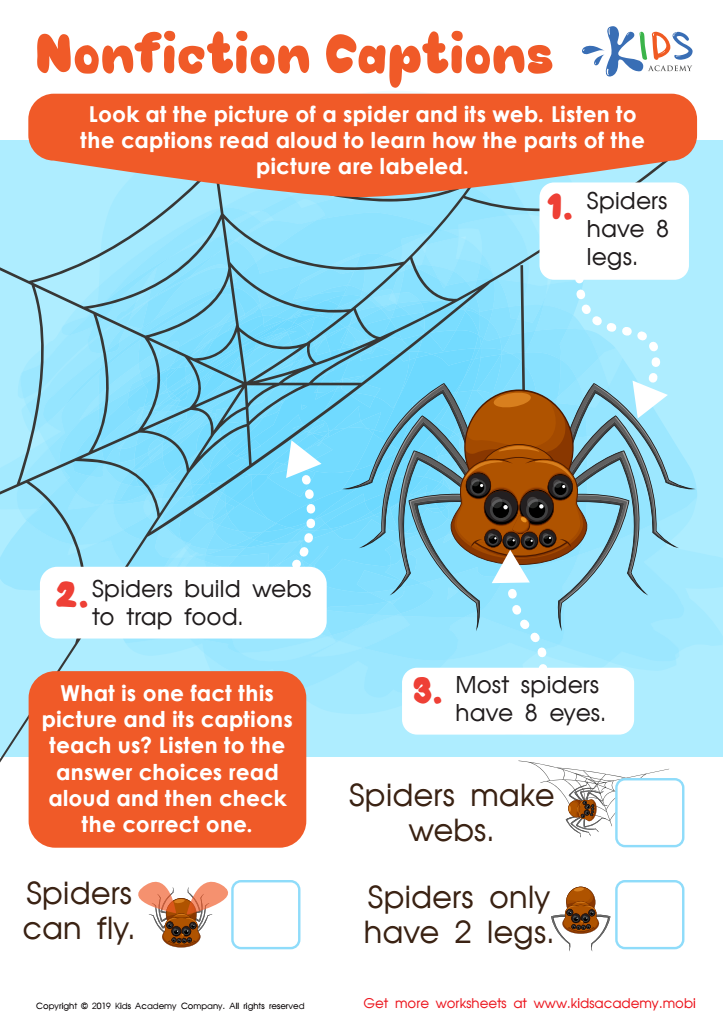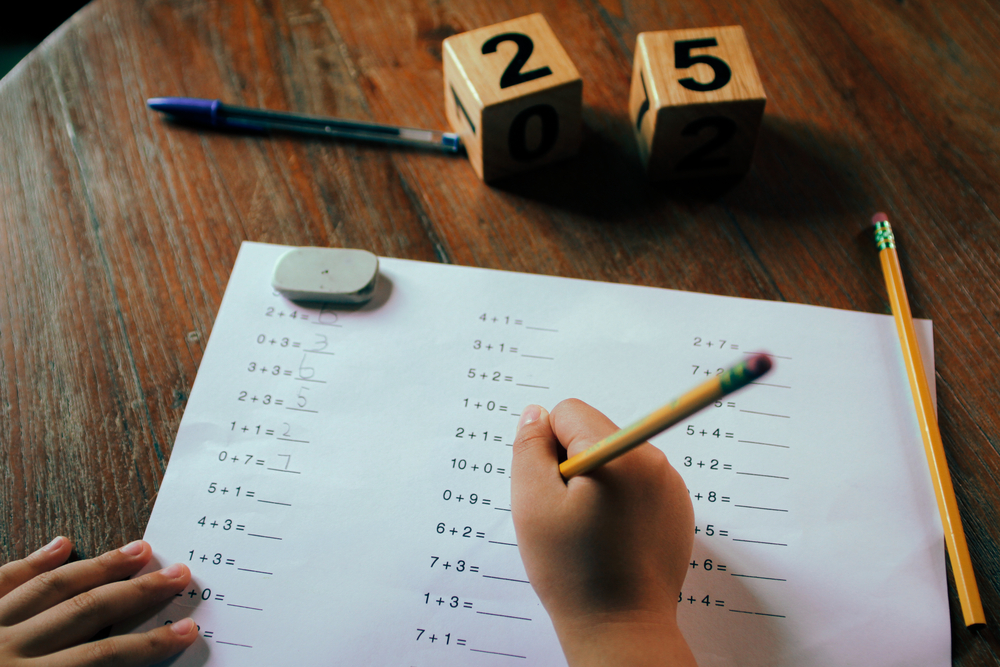Identifying non-fiction elements Worksheets for Kids
1 filtered results
-
From - To


Nonfiction Captions Worksheet
Question/Answer
Why is the Identifying non-fiction elements skill important for Preschool students?
The Identifying non-fiction elements skill is crucial for preschool students because it lays the foundation for critical thinking, enhances comprehension, and fosters a curiosity about the real world. It helps them differentiate between factual content and make-believe, encouraging inquiry-based learning and developing early literacy skills that are essential for academic success and informed decision-making in everyday life.
How does the mastery of the Identifying non-fiction elements skill affect a student's performance at an early age?
Mastery of identifying non-fiction elements at an early age significantly enhances a student's reading comprehension, critical thinking, and analytical skills. It helps them distinguish between facts and opinions, understand real-world concepts, and effectively gather information from diverse texts.
What are some effective activities to train students’ Identifying non-fiction elements skill when teaching them about Reading Non-Fiction?
Some effective activities for training students in identifying non-fiction elements include creating scavenger hunts for text features (headings, captions, glossaries), comparing and contrasting articles to identify key elements, summarizing paragraphs to highlight main ideas and details, using graphic organizers for text structure analysis (cause and effect, problem and solution), and engaging students in group discussions to evaluate the purpose and point of view.#$%
 Assign to the classroom
Assign to the classroom



.jpg)








